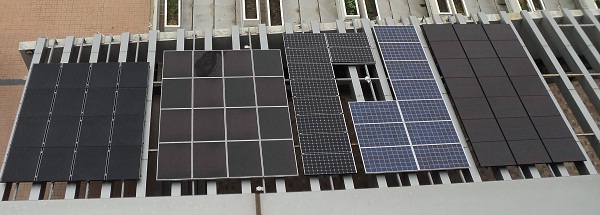As a country close to the equator, Thailand receives an annual solar radiation of 18.2 MJ/m2-day or 5 kWh/m2-day on average, higher than those in Japan and Germany where solar energy has been strongly supported as an alternative energy by their governments.
Since outdoors conditions of installed location greatly influence the output energy and durability of the photovoltaic (PV) modules as well as the components in the PV systems, it is important to examine actual performance and long-term reliability of the PV system operated under Thailand's high irradiance, high temperature, and high humidity climate.

The National Electronics and Computer Technology Center (NECTEC) and TABUCHI ELECTRIC Co., Ltd. jointly conduct a research project to evaluate long-term performance of various PV technologies and power conditioner. In addition to the R&D aspect, this project also aims to establish an informative photovoltaic learning place in the Thailand Science Park.
The 10 kW PV system comprises five types of solar cells (at 2 kW each). They are 1) monocrystalline silicon (heterojunction), 2) multicrystalline silicon, 3) double junction thin film amorphous/microcrystalline silicon, 4) double junction thin film amorphous/polycrystalline silicon, and 5) thin film copper indium diselenide (CIS). These modules are installed at the Sirindhorn Science Home in Thailand Science Park, Pathumthani province. The grid-connected 10 kW power conditioner used in this system is an unique string type DC/DC converter combined with an inverter developed by TABUCHI ELECTRIC. The TV display screen shows real time, daily, monthly and yearly data of the system and also provides information of the modules used in this project.
Benefits expected from this evaluation project between NECTEC and TABUCHI include
1. For PV users – in their selection of PV technology
2. For PV module and component manufacturers – in their product quality improvement
3. For Standard Testing Institutes – in their improvement of PV testing in tropical climate conditions
4. For visitors – in their better understanding of solar cells
